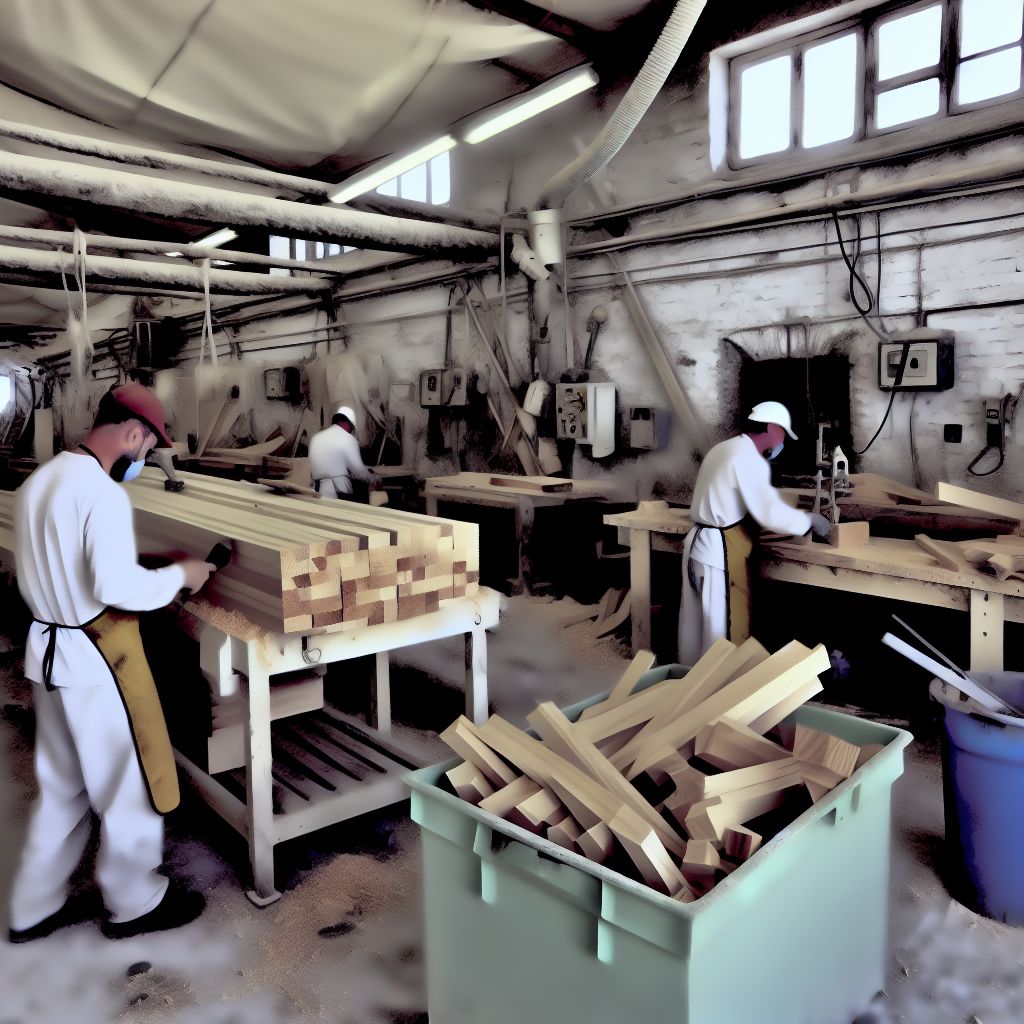Deutsch: Holzarbeiten / Español: Carpintería / Português: Marcenaria / Français: Menuiserie / Italiano: Lavorazione del legno
Woodwork in the industrial context refers to the craft, production, and industry of creating objects, structures, or components from wood through various processes such as cutting, shaping, and assembling. This term encompasses a wide range of applications, from the manufacturing of furniture and architectural details to the production of specialized wooden parts for various industries.
General Description

In the industry, woodwork involves both traditional craftsmanship and advanced manufacturing techniques. It combines the skills of carpentry, joinery, and wood machining to produce a diverse array of products. The industrial approach to woodwork emphasizes efficiency, precision, and scalability, often incorporating computer-aided design (CAD) and computer-aided manufacturing (CAM) technologies to achieve high levels of detail and consistency. This field is essential for the construction, furniture, and interior design industries, among others, providing both functional and aesthetic value to the products and structures made from wood.
Application Areas
- Construction: Woodwork is crucial in building frameworks, roofing, flooring, and architectural details.
- Furniture Manufacturing: The production of a wide range of furniture for homes, offices, and public spaces.
- Interior Design: Woodwork plays a key role in creating interior fixtures, fittings, and decorative elements.
- Packaging Industry: Production of wooden packaging materials, such as crates and pallets, essential for the transportation of goods.
- Musical Instruments: Crafting of wooden parts for musical instruments, requiring high precision and craftsmanship.
Well-Known Examples
- IKEA’s use of automated wood manufacturing processes for the efficient production of flat-pack furniture.
- The construction of traditional wooden Japanese temples, which showcases the intricate craftsmanship and durability of woodwork.
Risks
The primary risks associated with industrial woodwork include workplace safety hazards, such as injuries from machinery and health issues from dust inhalation. Additionally, environmental concerns regarding deforestation and sustainability of wood sources are significant. The industry also faces challenges related to maintaining craftsmanship quality in mass production.
Treatment
Mitigating these risks involves implementing strict safety protocols, adopting dust management systems, and using protective equipment. Sustainability can be addressed by sourcing wood from certified sustainable forests and utilizing waste wood products. Emphasizing quality control and integrating traditional craftsmanship with modern manufacturing can help maintain high product standards.
History and Legal Basics
Woodwork as a craft has ancient origins, with evidence of wood construction and furniture dating back thousands of years. The industrial revolution introduced mechanized processes to woodwork, significantly increasing production capabilities. Today, legal regulations in the woodwork industry focus on safety standards, environmental sustainability, and trade practices, ensuring responsible and ethical production and distribution of wooden products.
Examples of Sentences
- "The woodwork industry has seen significant advancements in digital fabrication techniques, enhancing both precision and efficiency."
- "Sustainable woodwork practices are essential for preserving forest resources for future generations."
Similar Terms or Synonyms
- Carpentry
- Joinery
- Wood machining
- Lumber processing
Summary
In the industrial context, woodwork refers to the skilled production of wooden products and structures through a combination of traditional craftsmanship and modern manufacturing techniques. It is a vital component of several industries, offering solutions for construction, furniture, and decorative arts. The field faces challenges related to safety, environmental sustainability, and maintaining craftsmanship quality, which can be mitigated through careful practices and regulations. The evolution of woodwork continues to embrace technological advancements, ensuring its relevance and sustainability in the modern industrial landscape.
--

